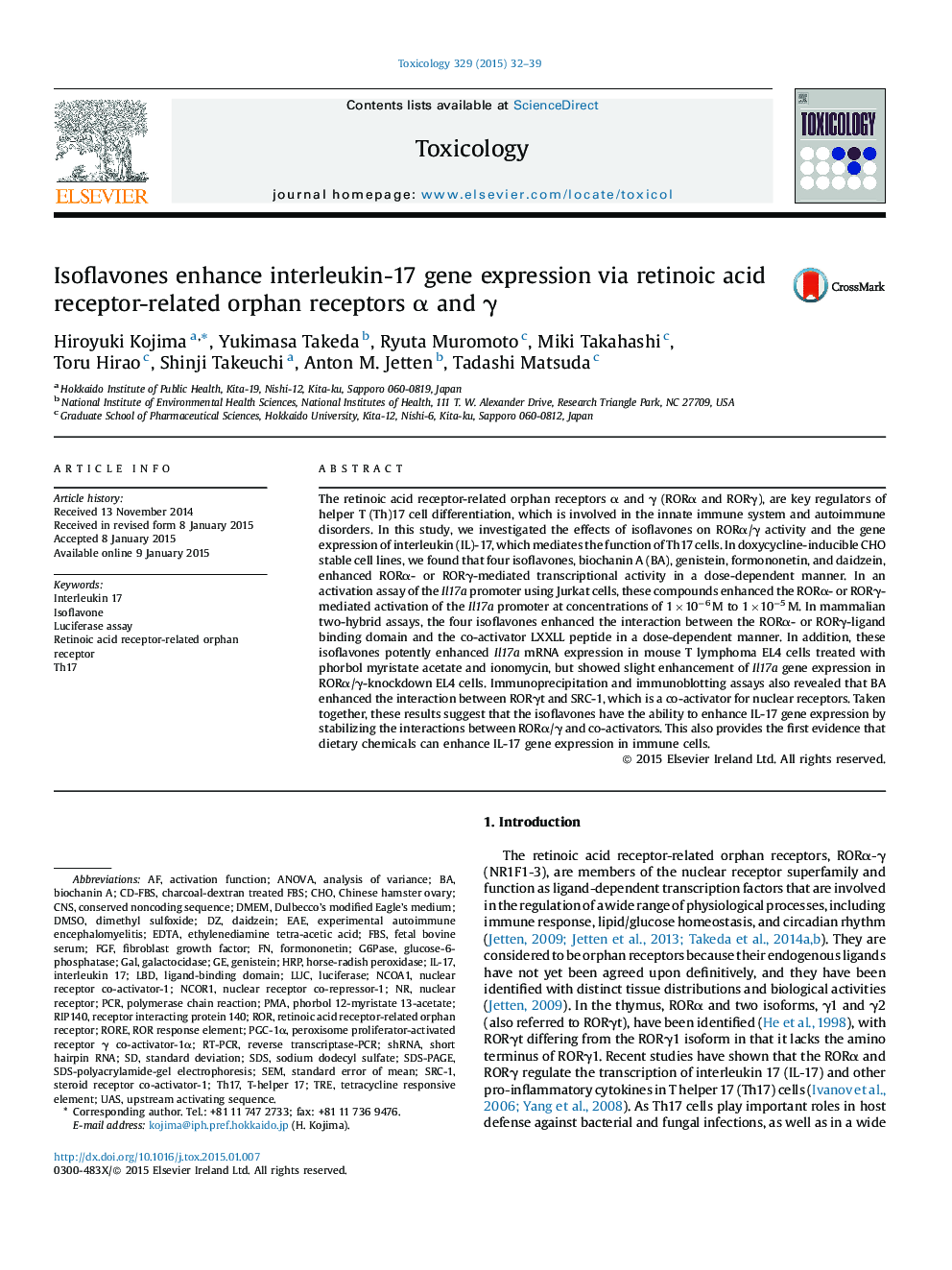| کد مقاله | کد نشریه | سال انتشار | مقاله انگلیسی | نسخه تمام متن |
|---|---|---|---|---|
| 5859171 | 1562327 | 2015 | 8 صفحه PDF | دانلود رایگان |

- Nuclear receptors, RORα and RORγ, are key regulators of Th17 cell differentiation.
- Isoflavones have RORα/γ agonistic activities.
- Isoflavones enhance the interaction of RORα/γ with co-activator.
- These compounds enhance the expression of Il17a mRNA in mouse EL4 cells.
- Dietary isoflavones can act as modulators of Il17a expression via RORα/γ.
The retinoic acid receptor-related orphan receptors α and γ (RORα and RORγ), are key regulators of helper T (Th)17 cell differentiation, which is involved in the innate immune system and autoimmune disorders. In this study, we investigated the effects of isoflavones on RORα/γ activity and the gene expression of interleukin (IL)-17, which mediates the function of Th17 cells. In doxycycline-inducible CHO stable cell lines, we found that four isoflavones, biochanin A (BA), genistein, formononetin, and daidzein, enhanced RORα- or RORγ-mediated transcriptional activity in a dose-dependent manner. In an activation assay of the Il17a promoter using Jurkat cells, these compounds enhanced the RORα- or RORγ-mediated activation of the Il17a promoter at concentrations of 1 Ã 10â6 M to 1 Ã 10â5 M. In mammalian two-hybrid assays, the four isoflavones enhanced the interaction between the RORα- or RORγ-ligand binding domain and the co-activator LXXLL peptide in a dose-dependent manner. In addition, these isoflavones potently enhanced Il17a mRNA expression in mouse T lymphoma EL4 cells treated with phorbol myristate acetate and ionomycin, but showed slight enhancement of Il17a gene expression in RORα/γ-knockdown EL4 cells. Immunoprecipitation and immunoblotting assays also revealed that BA enhanced the interaction between RORγt and SRC-1, which is a co-activator for nuclear receptors. Taken together, these results suggest that the isoflavones have the ability to enhance IL-17 gene expression by stabilizing the interactions between RORα/γ and co-activators. This also provides the first evidence that dietary chemicals can enhance IL-17 gene expression in immune cells.
Journal: Toxicology - Volume 329, 2 March 2015, Pages 32-39